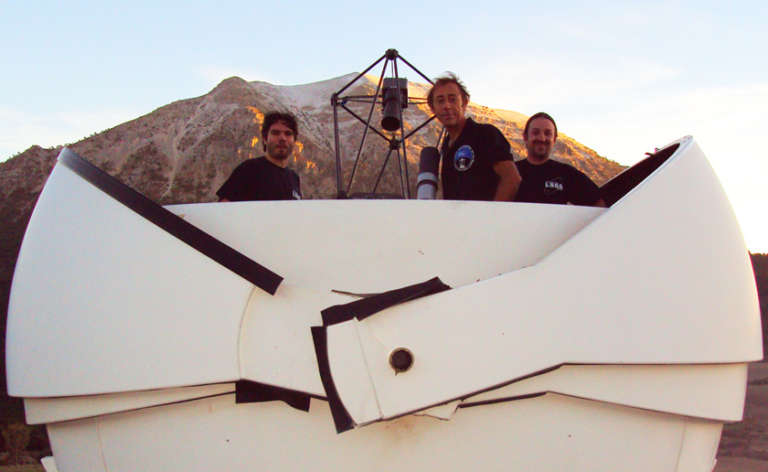Jaime Nomen • Aug 22, 2011
Shoemaker NEO Grant Update: Asteroid discoveries from La Sagra
Editor's note: Here is an update from amateur astronomer Jaime Nomen, who was awarded $7695 through our Shoemaker NEO Grant program to purchase a new camera for the La Sagra Observatory on the Spanish island of Mallorca. He and his partners have put the camera to good use! The Planetary Society is grateful to its members for their ongoing support of this effective program. --ESL
In spite of some bad weather conditions during the first part of this year, the new camera bought with funds from a Planetary Society Shoemaker Near Earth Object grant helped us to discover and confirm ten new near-Earth objects. (Links in the list below take you to orbit diagrams from JPL's Small-body Database Browser.)
- 2011 DS9 (a potentially hazardous asteroid)
- 2011 DU9
- 2011 GP59
- 2011 KE (a potentially hazardous asteroid)
- 2011 OV4
- 2011 OQ5
- 2011 OC18
- 2011 OD18
- 2011 PU1
- 2011 PE2
The new camera has increased our capability to discover fast-moving, close objects. The new camera has much faster readout than our old ones, so is able to take successive images at a higher rate. Close objects usually move with higher angular speeds so would move too far or even exit our field of view before being re-imaged and therefore could not be detected with our old cameras.

Particularly interesting, because of a JPL press release and subsequent media coverage, was 2011 GP59, discovered the night of April 8, 2011.

It made its closest approach to the Earth a week after the discovery date, on April 15, at only 533 thousand kilometers. Because it approached so closely it became very bright, magnitude 13. Moreover, the asteroid was "winking" every few minutes, due to a very fast rotation period and a possibly extremely elongated shape.
Many images and videos were taken and even posted in Google and YouTube, where this "winking" feature is clearly seen. You can find a lot of them by Googling 2011 GP59. One particularly nice video was taken by Joseph Brimacombe from Australia:
Taken from New Mexico Skies using a 20" RCOS and STL11K camera. The video comprises 160 x 30 frames binned 3x3 from 7h12m to 8h55m UT
Support our core enterprises
Your support powers our mission to explore worlds, find life, and defend Earth. You make all the difference when you make a gift. Give today!
Donate

 Explore Worlds
Explore Worlds Find Life
Find Life Defend Earth
Defend Earth

